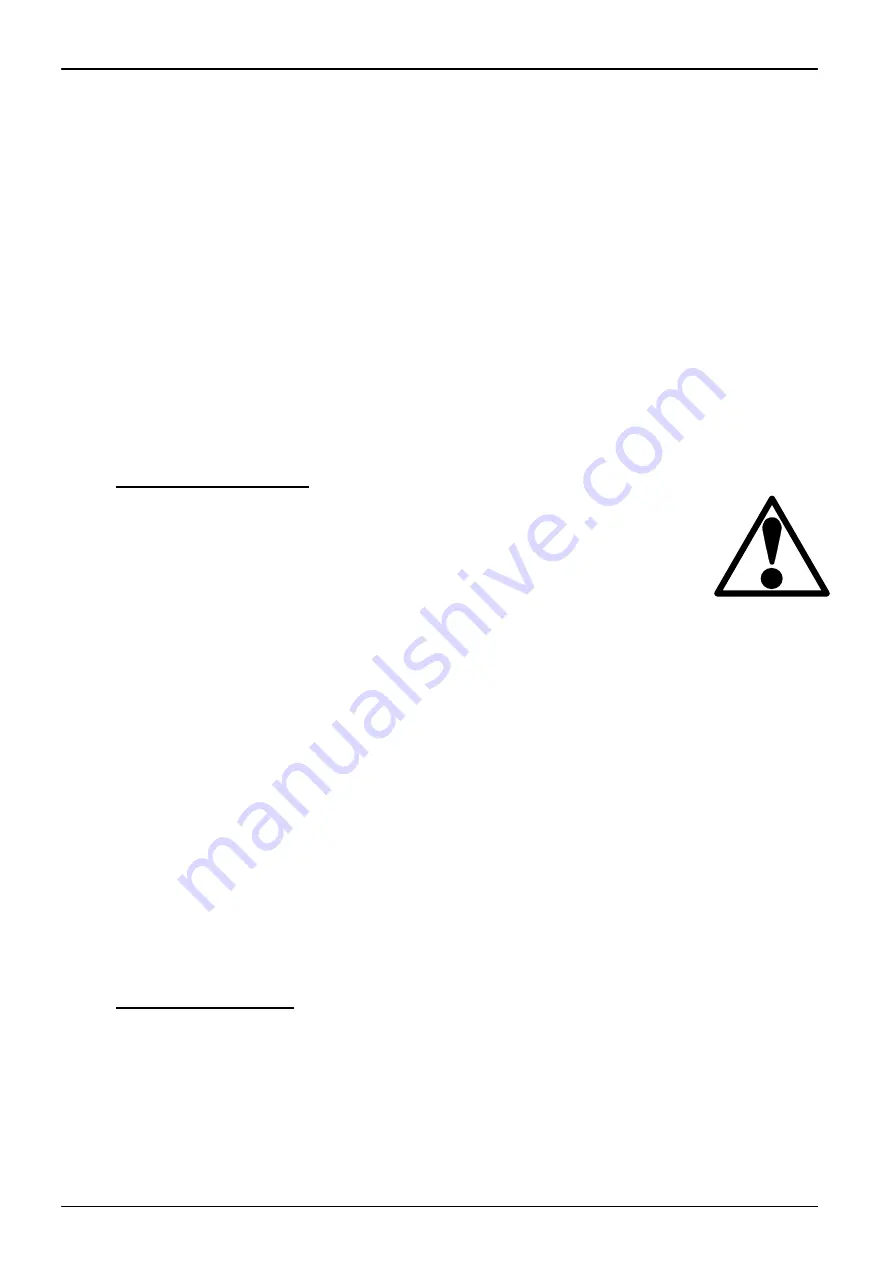
Caf Digital Imaging
page 10
MF36
Due to the high work tube temperatures used during CAF testing the tube ‘O’ ring seals will
deteriorate with time. The furnace work tube also has a finite life and may eventually crack due
to normal wear and tear. It is necessary to conduct a pressure test of the work tube assembly at
regular intervals during normal use of the furnace to ensure integrity of the work tube and ‘O’
ring seals. The following procedure applies:
Connect one end of the flexible gas inlet pipe (normally connected between the bulkhead
connection on the front of the furnace case and the work tube front seal assembly) to the work
tube front seal assembly. See fig 11. Connect the other end to an adjustable compressed air test
line or inert gas supply capable of delivering up to 4 psi. Check all air/gas connections for leaks,
any leakage from the air/gas supply line may affect the pressure test results.
Close the door assembly and clamp in position using the swing bolts.
Securely block the work tube vent at the back of the furnace using a bung or blanking plug.
Pressurise the work tube assembly via the flexible gas inlet pipe to 3 psi
±
1 psi using
compressed air or inert gas, and check that the work tube assembly does not leak.
Following successful pressure testing of the work tube assembly, connect the flexible gas inlet
pipe to the bulkhead connection on the front of the furnace case. Check all external gas
connections and vent tubes for leaks prior to using the furnace.
3.4.
Positioning The Furnace.
Significant amounts of carbon monoxide may be exhausted from the work
tube during the use of this furnace. Carbon monoxide is toxic and
inflammable (see section 1.2: Carbon Monoxide Warning.) and must be
ducted out of the building. See also section 3.6: Exhaust Vent Connections.
The furnace is designed to be gas tight during normal operation, but incorrect
installation or component failures due to misuse or wear and tear could give
rise to a high presence of carbon monoxide. To minimise risk to the user in
the event of a high presence of carbon monoxide the furnace must be installed under a suitable
forced air extraction hood. An example is shown in fig 12. The extraction hood must be ducted
out of the building and must be operating whenever the furnace is in use. The room must be well
ventilated and the ‘fresh air in’ ventilation should exceed the hood extraction to ensure that
fumes do not escape into the room.
As a precaution the furnace is supplied with a carbon monoxide detector. If the CO detector is
correctly installed it will alert the furnace operator in the event of a leak of carbon monoxide that
is not removed by extraction.
Note:
The CO detector must be positioned and installed in accordance with the manufacturer’s
instructions supplied. In the event of a CO detector alarm evacuate the area immediately and
seek expert advice. Isolated the furnace from the gas and electricity supply only if it is safe to do
so.
Ensure that the furnace is installed in such a way that the electrical supply and the gas supply can
be quickly switched off in the event of an emergency without any danger to the operator.
Ensure that there is a minimum free space of 100mm around the furnace and do not obstruct any
of the vents in the case as these are required to keep internal components cool.
3.5.
Electrical Connections.
Connection by a qualified electrician is recommended.
The voltage or range of voltages on which the furnace may be operated is given on the furnace
rating label. See fig 11. Check that the supply voltage is compatible with the voltage on the label,
and that the current capacity is sufficient for the maximum current on the label before connection
to the supply.
The furnace should be permanently connected to the correct supply through a wall mounted
isolating switch or an easily removable plug. The switch or plug should be within easy reach of











































